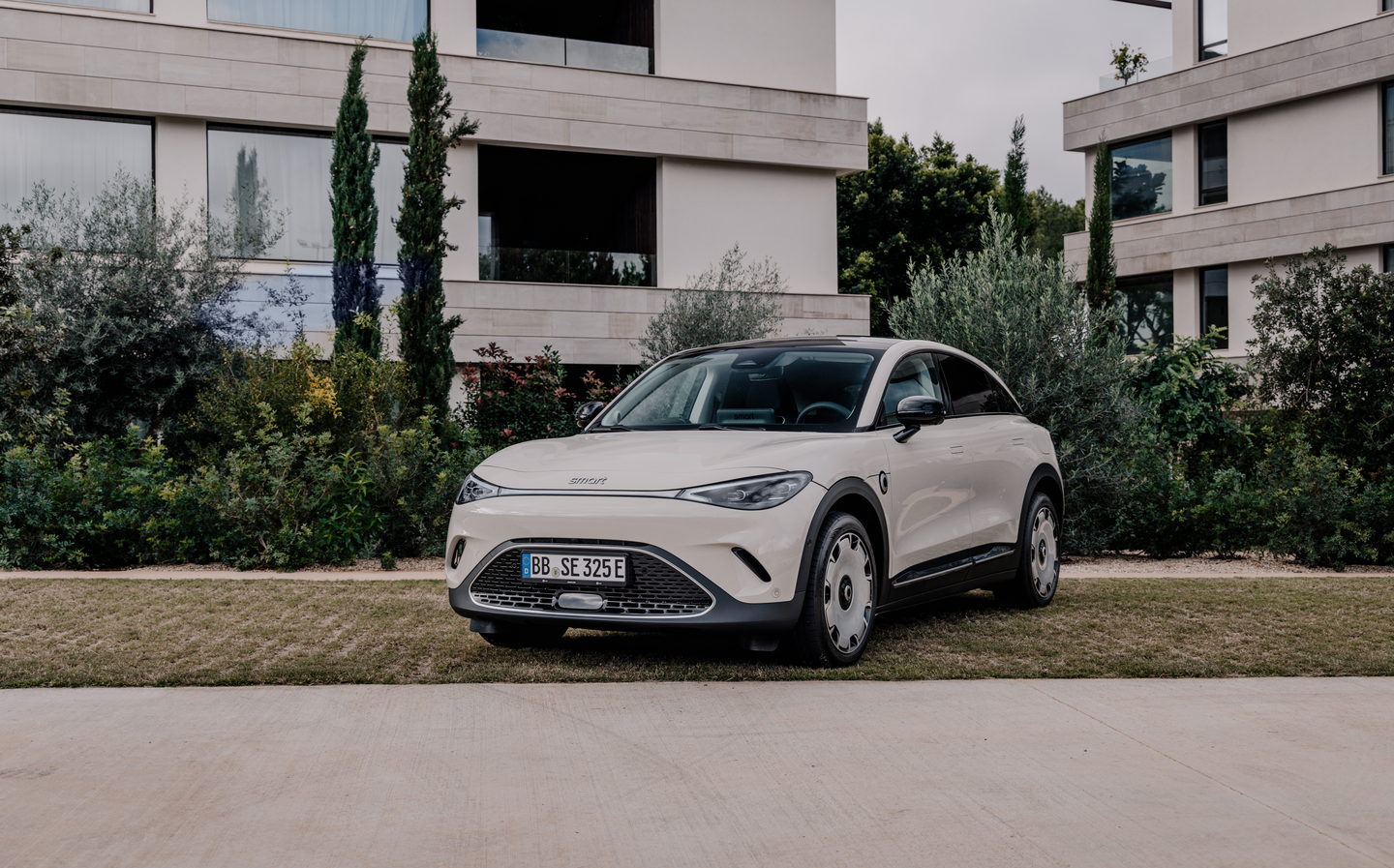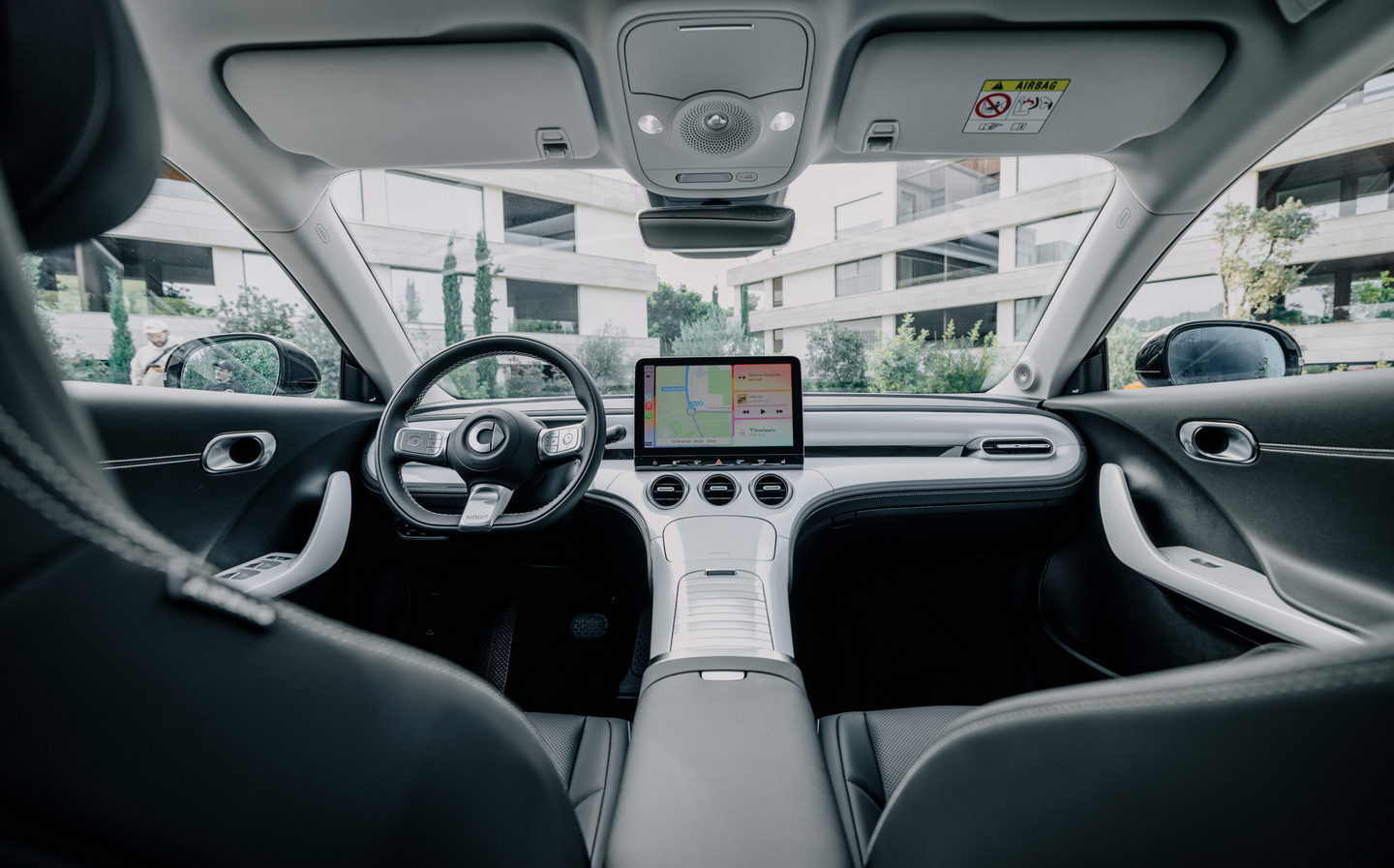Smart #3 review 2023: Stylish, roomy electric crossover reinvents the brand ... again
Smart’s back! But is it still Smart?
Smart has spent the past two days trying to eradicate memories of the teeny-tiny ForTwo from our minds. It is a brand that never intended to make only small cars, it’s now claimed, and now stands for the most roomy and practical cars in any class.
We’re told that it cost the same to engineer a ForTwo as it does a Mercedes E-Class, so today’s radically different models are designed to help Smart finally sell something at a profit. Ok, that last bit wasn’t actually part of the official line, but it was heavily implied.
Heading into its 25th anniversary year in 2024, Smart is now jointly run by Mercedes and Chinese car company Geely. Geely also owns Volvo, Polestar, Lotus and many more brands, and has developed the electric car platform that both this #3 and the taller, stubbier Smart #1 use, hence a close mechanical relationship to the likes of the Volvo EX30 and the incoming Polestar 4.

So, you’ll be able to buy this #3 — yes, it’s pronounced “Hashtag 3” and no, that hasn’t got less silly since we tested its stablemate — with a choice of two batteries, rear-wheel drive or four-wheel drive, as well as a sportier Brabus model.
The entry-level #3 Pro costs a very sharp £32,950. This comes with a cheaper battery, one using lithium-iron phosphate (LFP) chemistry, which, combined with a basic 7.4kW AC charging system for home wall boxes, for example, is more than £4,000 cheaper for Smart to make than the longer range model.
The Pro’s battery has 49kWh of useable energy, giving it an official range of 202 miles on a full charge. It’ll replenish at up to 130kW from a DC rapid charger, which means 10-80 per cent takes as little as 30 mins.
Upgrade to the £36,950 Pro+ or the £39,950 Premium model under test here and you get a 62kWh battery which uses more energy-efficient lithium-ion technology.
This gives a potential range of up to 283 miles, although there’s no extra power — the same rear-mounted 268bhp electric motor is used.
That’s not a bad thing as it has plenty of poke, able to push the #3 with the larger battery to 62mph from rest in just 5.8 seconds.
Brabus tuning
There is an upgrade available for those who do want even more performance, though. Brabus made its name cramming massive V12 and V8 engines into the engine bays of various Mercedes, and now it’s making electric Smarts go quicker.
The £45,450 Brabus #3 gets two motors, four-wheel drive and 422bhp, with a faintly ridiculous 0-62mph time of 3.7 seconds.
That’s a fraction of second slower than the closely-related Volvo EX30 Performance, but then the #3 is a little longer and larger than the Volvo. And anyway, it’s faster than many petrol-fuelled sports cars can manage.

When it comes to the interior, Smart’s promise is that the #3’s inherent Smart-ness is in how much interior space it offers.
Certainly, it feels more than sufficiently roomy inside, with lots of legroom and headroom in the back in spite of it sitting some 80mm lower than the Smart #1.
The boot’s not great, though — it holds just 370 litres, and the luggage compartment under then bonnet accommodates a vaguely pointless 15-litres. Still, not all EVs offer that, even.
Front passengers get a pair of tasty high-backed sports seats, which are heated and electrically adjustable across the entire range.
The big panoramic glass roof is standard, too, and makes the cabin feel pleasantly airy in spite of how low-down it all is.

Between the front seats is a tall centre console and it has a large open storage area underneath, with smaller, covered compartments for odds and ends.
Curiously, the whole centre console — from the armrest all the way up to the three little round air vents — looks as if it has simply been lifted from the old Mercedes C-Class and resprayed. Maybe one was lying around handy on the day the interior was designed.
Maddening touchscreen
All models get a decent 12.8in touchscreen in the centre of the dashboard, though the basic Pro model must do without the neat little strip of driver’s information screen that sits behind the steering wheel.
That’s a shame, as it is much less distracting to glance down there to check your speed, range etc than to look across at the big screen.
There’s also a head-up display projected onto the windscreen for higher spec models.
As for the big touchscreen, it comes incredibly close to ruining your experience of the #3. True, you’d probably get used to its byzantine menu layout with a bit more practice over time, but you’ll be constantly maddened by the endless parade of beeps and warnings that it issues.
Now, fair enough, these are for mandated safety-sensitive items such as speed limits, lane departure and approaching too close to the car in front, but you’d be less maddened by them were they actually consistent.
The speed limit warning — which chides you in a full synth-human voice if you drift above the limit — is especially dense, seemingly unable to post the correct speed limit for a given road for more than a few seconds at a time. No, Smart, it is NOT acceptable to do 50mph through this tiny village.

The digital voice assistant is similarly useless, no matter how cute you think the on-screen Cheetah avatar is. It seemed oblivious to repeated utterances of the “Hello Smart” command initiation and when I eventually did get through, it was able to lower the driver’s window (ironically, one of the few items that still has a physical switch) but couldn’t turn the steering wheel heater on.
If anything, the navigation is even worse, repeatedly directing us down prohibited streets, or insisting that the airport was in the centre of town.
Combine that with excessively fiddly controls for things such as the door mirrors, and you’ll start wishing that Smart provided a branded lump-hammer, so that the screen can be permanently dispensed with.
Lots of power…
Will the driving experience provide any relief? A little, but the #3 is not what you’d call an especially thrilling car to drive. With 268bhp for the rear-drive model, it’s never less than brisk, although it can run out of puff a little on long motorway climbs.
It cruises quietly and smoothly on main roads, but that unfortunately gives you ample opportunity to listen to the various creaks and rattles of the cabin (a pre-production vehicle, in fairness) or loose items clattering around in the unlined door bins.

It goes around corners. It brakes quite neatly and smoothly. But the #3 never exhibits anything other than a passing interest in the business of driving. The steering is entirely numb in any of its adjustable weight settings, so there’s little-to-nothing here for the keen driver.
It’s not even particularly good in town, where the long wheelbase (the distance between the front and rear wheels) makes for a broad turning circle which could see you having to back up and have a second go at mini-roundabouts.
At least the range holds up well. Our Premium test car showed a full 280 miles on a full charge, and in spite of motorway and mountain driving, it seemed to stick mostly to that promise, using a kWh for about every 3.5 miles.
The Premium’s heat-pump climate control, which lesser versions lack, doubtless helped.
Should keen drivers upgrade to the Brabus version? Maybe… It’s certainly wildly rapid in a straight line, enough so that vomit will rarely be more than an ankle-flex away for some passengers.
That said, for the most part, it doesn’t feel as if it has the agility nor driver appeal to really convince, but then again if you switch it into the special ‘Brabus’ driving mode, it does perk up a bit, with more linear steering weight and speed, and a sense of muscular enthusiasm.
It’s not a great driver’s car, certainly not by Brabus’ traditionally lofty standards, but it’s fun, if a touch pointless given that you lose about 30 miles of range, so any extra speed you generate will be nullified by an earlier charging stop.

Clearly, Smart had to adapt and evolve beyond its dinky two-seat city car roots, quite simply because not enough people were buying those and the profit margins were wafer thin.
The #3 should prove to be a lot more popular, thanks to being the car that apparently everyone wants right now — an electric crossover — and more profitable thanks to those low Chinese factory costs.
What it lacks is a true sense of purpose, of something that allows it to yell “look at me!” louder than the morass of other electric crossovers that will surround it — aside from perhaps its eye-catching entry-level price tag. It’s generally handsome, certainly roomy and fine — if no more — to drive. Will all that be enough to revitalise the Smart brand?
Chinese carmakers
Smart is a German-Chinese car brand with headquarters in Ningbo, Zhejiang, China. Smart Automobile Co., Ltd. is a 50:50 joint venture between Mercedes-Benz AG and Zhejiang Geely Holding Group, a privately-owned multinational conglomerate headquartered in Hangzhou, Zhejiang.
Related articles
- If you were interested in the new Smart #3, you might like to read our review of the stylish new Volvo EX30
- Looking for other options to go electric? Here are the top 10 longest-range electric cars
- Take a look at all the car makers’ electric vehicle plans
Latest articles
- Porsche 911 Carrera S 2025 review: Harder, better and faster – but is it the best 911?
- F1 2025 calendar and race reports: The new Formula One season as it happens
- Seven great automotive events to visit this summer, from F1 to art and champagne
- Watch new Porsche 911 GT3 smash Nürburgring record for manual cars
- Skoda Elroq 2025 review: Czech carmaker can’t seem to miss with its electric family cars
- Five best electric cars to buy in 2025
- Should I buy a diesel car in 2025?
- Zeekr 7X AWD 2025 review: A fast, spacious and high tech premium SUV — but someone call the chassis chief
- Denza Z9GT 2025 review: Flawed but sleek 1,062bhp shooting brake from BYD’s luxury arm




























